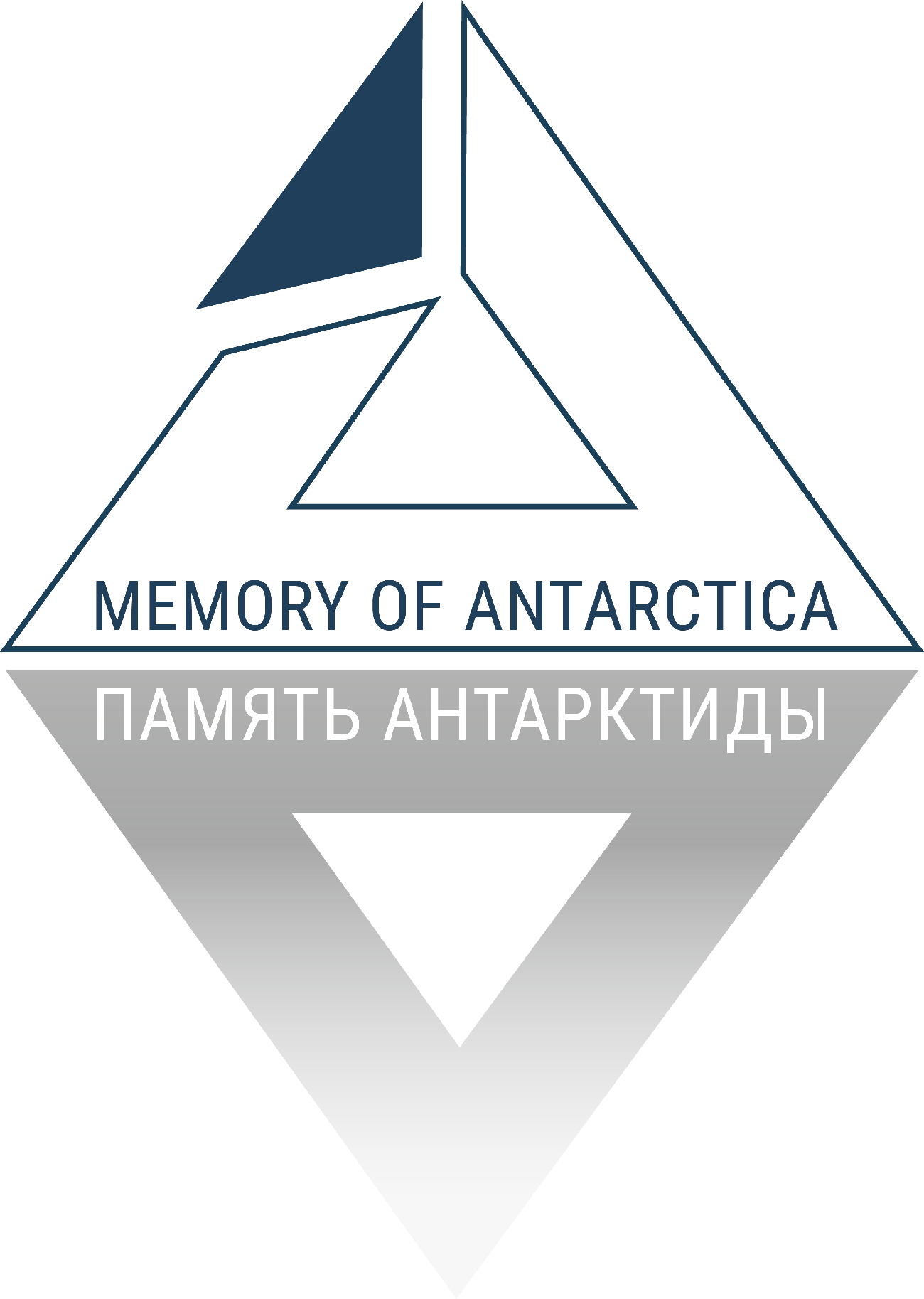9th June 1941 - 12th October 1965
Jeremy Bailey was a physicist who developed ice depth radar technology at the Scott Polar Research Institute Cambridge with Dr Gordon Robin and Dr Stan Evans in the early '60s. He refined his methods first in Greenland but it was during the first Antarctic traverse by tractor using this equipment that Jeremy Bailey lost his life with John Wilson and David Wild in 1965 a crevasse accident in Dronning Maud Land during an expedition from the British Antarctic Survey Base of Halley Bay.
The photograph below shows the expedition members at Pyramid Rocks shortly before they split into four groups and within two days of the accident. They are from the left Rod Rhys Jones, Doug Beebe, Tony Haines, Dai Wild, Lewis Juckes, Jeremy Bailey, Ian Ross, Geoff Lovegrove, Brian Porter, and John Wilson.The aerials on the cab were part of the ice depth radar equipment devised by Jeremy Bailey to map the contours of the mountains beneath the ice.
The use of radio waves penetrate the ice and when they reach the interface between ice and rock they bounce back because of the difference in electrical properties between the two. The differences can be measured and plotted thus revealing the mountains and valleys far below the ice surface. The technique was used recently in an aerial survey of the Gambutsev Mountains beneath the East Antarctic ice sheet.
Jeremy was educated at Watford Grammar School for Boys, starting there in 1952. While at school he was industrious and obedient, never challenging authority or finding himself in trouble. His 'O' level and 'A' level results were satisfactory without being outstanding, but being high enough to obtain his University place. In his final year he was a school prefect.
He had no interest in sport of any description but had a great love of music. He was a member of a local church choir and the school choir. He also played the recorder and became a competent pianist. He had a great love of classical music, he would accept jazz, but rock and roll and top twenty tunes were well below his dignity!
The whole family was involved in Scouting. Jeremy joined the school troop and made a strong contribution to its activities, particularly in his last two years when he lead a cycle camping trip and also lead an expedition to the Caingorm Mountains. He was also a member of the Hertfordshire Contingent at the Jubilee Jamboree marking the 50th Anniversary of the Scout Movement.
His hobbies include an interest in radio, building crystal sets, valve radios and progressing to transistorized Hi Fi sound systems.
Leaving school in 1960 he went to Bristol University. He continued his music interest in the University Choir and, together with a small group of fellow students, would perform recorder quartets in the local laundry while doing the washing! He retained his scouting contacts in the Bristol University Rover Crew and helped with a local troop. He obtained a 2-1 in physics and to study for his PhD, he was taken on at Scott Polar Research Institute and Downing College in Cambridge. He worked with Stan Evans and Gordon Robin on the development of radar depth sounding equipment, which was tested successfully in Greenland in 1964. He arrived at Halley Bay aboard the Kista Dan in December 1964 and died with David Wild and John Wilson in the following October. Sir Vivian Fuch's account of the accident can be read in this extract from his book Of Ice and Men.. An ice stream in Dronning Maud Land was named the Baileyranten - the Bailey Ice Stream.
He was always modest and never told anyone of his successes unless a direct question was put to him. The first that the family knew that he had gained his Queens Scout Badge was when we saw it neatly sewed on his shirt. We did not know, until going through his personal effects after his death, that he had been both secretary, and later, president of The Physical Society at Bristol University.
He achieved much in his short life. His calm temperament, dedication to his allotted or self-chosen tasks, dry sense of humour and loyalty was such that he was well respected by most who knew him.
BJDB
****
The following appeared in "The Fullerian" the school magazine of Watford Grammar School for Boys in December 1965
JEREMY THOMAS BAILEY (W.G.S. 1952-1960)
"My path is one which has brought me to great happiness, and if its blazes, faulty though they may be, should help in any way to cheer or guide some other wanderer on his road., then my blazing will not have been in vain."
Extract from a lesson Jeremy Bailey once read in Morning Assembly.
Jeremy Bailey will be remembered by the School Scout Group chiefly for his unfailing cheerfulness, his tremendous enthusiasm and his capacity to enjoy life to the full. In camp, on expeditions or in the usual activities of School life, his consideration for those around him and his resourcefulness in difficult conditions were an inspiration to many of us. His sense of humour and his musical versatility will be remembered round many a camp-fire.
Alan Collins (Teacher and Scoutmaster of the school Scout Troop)
Earlier {his term, on turning out some old papers at School, there was discovered a pencilled note: "Bailey rendered first aid." T'hese words referred to an accident in the Rickmansworth Road about thirteen years ago when Jeremy Bailey, then a very small cog in the School machine, helped to save another boy's life. It would be easy to over-dramatise Jeremy's school career, for in many respects he was the antithesis of the future explorer, popularly conceived. Small in stature, he never attempted to make good this deficiency by self -assertiveness at the expense of others. A moderate scholar when compared with his contemporaries in the "A" stream, he was engaged at the time of his death in research which those with better paper qualifications may well have envied. It might have been expected that life at Bristol and Cambridge Universities, in Greenland and Antarctica would have carried Jeremy intellectually as well as physically far from his old school. Yet one recalls the boyish enthusiasm with which, during a recent leave, he showed his photostat echoes from the rocks beneath the Greenland ice; and the excitement when there arrived from Halley Bay a letter with every current Falkland Islands stamp upon its cover. (This was, at his suggestion, later sold for charity.)
Past and present members of Watford Grammar School wish to extend their sympathy to Mr. and Mrs. Bailey and to Brian. We may perhaps draw consolation from the belief that his life of twenty-four years was more positive and rewarding than many an existence three times as long.
John Rigg (Jeremy’s Form Master in 6th Form)
Jeremy Bailey died in high endeavour on the Antarctic ice sheet, drawn by the discoveries which awaited him there and reveling in the difficulties which lay in their path. When I consider why we, his colleagues in Cambridge and in the British Antarctic Survey, are so stunned by this loss, I know that it is because we had placed such firm hopes in his future achievement and gained such warmth from his personality.
In 1963 he came from the Department of Physics at the University of Bristol to the Scott Polar Research Institute in Cambridge as a research student and candidate for Ph.D. We worked on a radio echo instrument for sounding the depth of ice sheets in the polar regions. The principles were largely established before he came, but the practical realisation took final shape in his first six months, after which we went to Greenland together and took the first continuous records of the character of the terrain beneath the ice sheet. In the few months after returning from Greenland and before sailing for the Antarctic in December 1964, there was no time for a holiday; he was too enthusiastic about the prospects of the new technique to spare the time. Several hundred miles of travel 'by oversnow vehicle in the Antarctic have yielded a succession of technical advance and valuable original records of the ice sheet itself. Some, possibly all, of these will be recovered and we shall use them as our contribution to his memorial.
I believe he was ideally suited to the project and continuously happy in it. The combination of scientific dedication and instinctive human understanding which pays such dividends in the field was very soon apparent in Greenland; He was working to the very last and never knew the sadness he never intended to cause.
S. Evans, Scott Polar Research Institute, Cambridge
Jeremy Bailey was a physicist who developed ice depth radar technology at the Scott Polar Research Institute Cambridge with Dr Gordon Robin and Dr Stan Evans in the early '60s. He refined his methods first in Greenland but it was during the first Antarctic traverse by tractor using this equipment that Jeremy Bailey lost his life with John Wilson and David Wild in 1965 a crevasse accident in Dronning Maud Land during an expedition from the British Antarctic Survey Base of Halley Bay.
The photograph below shows the expedition members at Pyramid Rocks shortly before they split into four groups and within two days of the accident. They are from the left Rod Rhys Jones, Doug Beebe, Tony Haines, Dai Wild, Lewis Juckes, Jeremy Bailey, Ian Ross, Geoff Lovegrove, Brian Porter, and John Wilson.The aerials on the cab were part of the ice depth radar equipment devised by Jeremy Bailey to map the contours of the mountains beneath the ice.
The use of radio waves penetrate the ice and when they reach the interface between ice and rock they bounce back because of the difference in electrical properties between the two. The differences can be measured and plotted thus revealing the mountains and valleys far below the ice surface. The technique was used recently in an aerial survey of the Gambutsev Mountains beneath the East Antarctic ice sheet.
Jeremy was educated at Watford Grammar School for Boys, starting there in 1952. While at school he was industrious and obedient, never challenging authority or finding himself in trouble. His 'O' level and 'A' level results were satisfactory without being outstanding, but being high enough to obtain his University place. In his final year he was a school prefect.
He had no interest in sport of any description but had a great love of music. He was a member of a local church choir and the school choir. He also played the recorder and became a competent pianist. He had a great love of classical music, he would accept jazz, but rock and roll and top twenty tunes were well below his dignity!
The whole family was involved in Scouting. Jeremy joined the school troop and made a strong contribution to its activities, particularly in his last two years when he lead a cycle camping trip and also lead an expedition to the Caingorm Mountains. He was also a member of the Hertfordshire Contingent at the Jubilee Jamboree marking the 50th Anniversary of the Scout Movement.
His hobbies include an interest in radio, building crystal sets, valve radios and progressing to transistorized Hi Fi sound systems.
Leaving school in 1960 he went to Bristol University. He continued his music interest in the University Choir and, together with a small group of fellow students, would perform recorder quartets in the local laundry while doing the washing! He retained his scouting contacts in the Bristol University Rover Crew and helped with a local troop. He obtained a 2-1 in physics and to study for his PhD, he was taken on at Scott Polar Research Institute and Downing College in Cambridge. He worked with Stan Evans and Gordon Robin on the development of radar depth sounding equipment, which was tested successfully in Greenland in 1964. He arrived at Halley Bay aboard the Kista Dan in December 1964 and died with David Wild and John Wilson in the following October. Sir Vivian Fuch's account of the accident can be read in this extract from his book Of Ice and Men.. An ice stream in Dronning Maud Land was named the Baileyranten - the Bailey Ice Stream.
He was always modest and never told anyone of his successes unless a direct question was put to him. The first that the family knew that he had gained his Queens Scout Badge was when we saw it neatly sewed on his shirt. We did not know, until going through his personal effects after his death, that he had been both secretary, and later, president of The Physical Society at Bristol University.
He achieved much in his short life. His calm temperament, dedication to his allotted or self-chosen tasks, dry sense of humour and loyalty was such that he was well respected by most who knew him.
BJDB
****
The following appeared in "The Fullerian" the school magazine of Watford Grammar School for Boys in December 1965
JEREMY THOMAS BAILEY (W.G.S. 1952-1960)
"My path is one which has brought me to great happiness, and if its blazes, faulty though they may be, should help in any way to cheer or guide some other wanderer on his road., then my blazing will not have been in vain."
Extract from a lesson Jeremy Bailey once read in Morning Assembly.
Jeremy Bailey will be remembered by the School Scout Group chiefly for his unfailing cheerfulness, his tremendous enthusiasm and his capacity to enjoy life to the full. In camp, on expeditions or in the usual activities of School life, his consideration for those around him and his resourcefulness in difficult conditions were an inspiration to many of us. His sense of humour and his musical versatility will be remembered round many a camp-fire.
Alan Collins (Teacher and Scoutmaster of the school Scout Troop)
Earlier {his term, on turning out some old papers at School, there was discovered a pencilled note: "Bailey rendered first aid." T'hese words referred to an accident in the Rickmansworth Road about thirteen years ago when Jeremy Bailey, then a very small cog in the School machine, helped to save another boy's life. It would be easy to over-dramatise Jeremy's school career, for in many respects he was the antithesis of the future explorer, popularly conceived. Small in stature, he never attempted to make good this deficiency by self -assertiveness at the expense of others. A moderate scholar when compared with his contemporaries in the "A" stream, he was engaged at the time of his death in research which those with better paper qualifications may well have envied. It might have been expected that life at Bristol and Cambridge Universities, in Greenland and Antarctica would have carried Jeremy intellectually as well as physically far from his old school. Yet one recalls the boyish enthusiasm with which, during a recent leave, he showed his photostat echoes from the rocks beneath the Greenland ice; and the excitement when there arrived from Halley Bay a letter with every current Falkland Islands stamp upon its cover. (This was, at his suggestion, later sold for charity.)
Past and present members of Watford Grammar School wish to extend their sympathy to Mr. and Mrs. Bailey and to Brian. We may perhaps draw consolation from the belief that his life of twenty-four years was more positive and rewarding than many an existence three times as long.
John Rigg (Jeremy’s Form Master in 6th Form)
Jeremy Bailey died in high endeavour on the Antarctic ice sheet, drawn by the discoveries which awaited him there and reveling in the difficulties which lay in their path. When I consider why we, his colleagues in Cambridge and in the British Antarctic Survey, are so stunned by this loss, I know that it is because we had placed such firm hopes in his future achievement and gained such warmth from his personality.
In 1963 he came from the Department of Physics at the University of Bristol to the Scott Polar Research Institute in Cambridge as a research student and candidate for Ph.D. We worked on a radio echo instrument for sounding the depth of ice sheets in the polar regions. The principles were largely established before he came, but the practical realisation took final shape in his first six months, after which we went to Greenland together and took the first continuous records of the character of the terrain beneath the ice sheet. In the few months after returning from Greenland and before sailing for the Antarctic in December 1964, there was no time for a holiday; he was too enthusiastic about the prospects of the new technique to spare the time. Several hundred miles of travel 'by oversnow vehicle in the Antarctic have yielded a succession of technical advance and valuable original records of the ice sheet itself. Some, possibly all, of these will be recovered and we shall use them as our contribution to his memorial.
I believe he was ideally suited to the project and continuously happy in it. The combination of scientific dedication and instinctive human understanding which pays such dividends in the field was very soon apparent in Greenland; He was working to the very last and never knew the sadness he never intended to cause.
S. Evans, Scott Polar Research Institute, Cambridge
Family's archive photos




